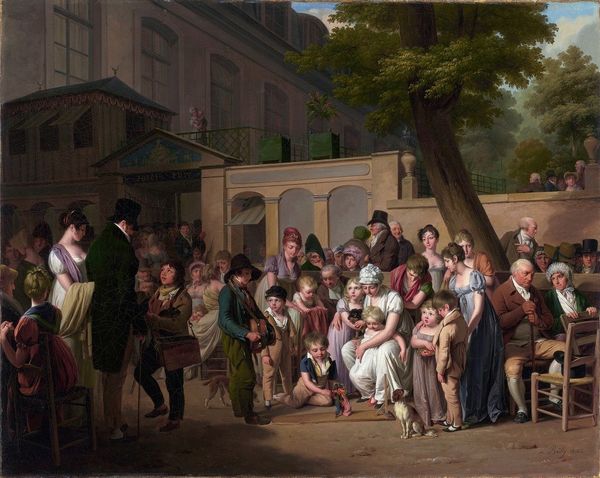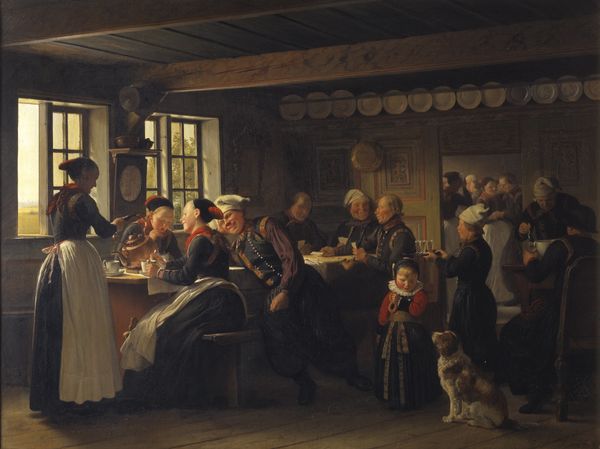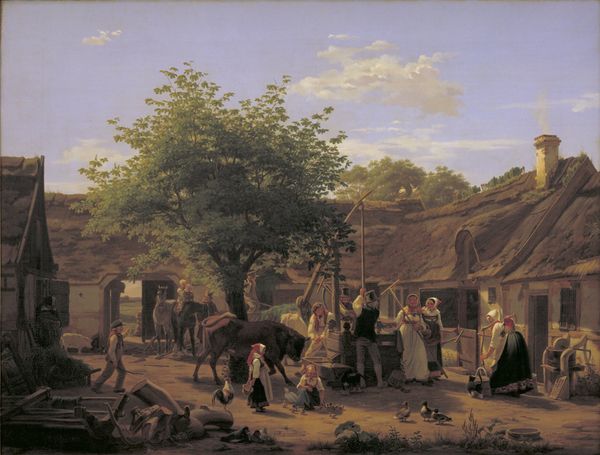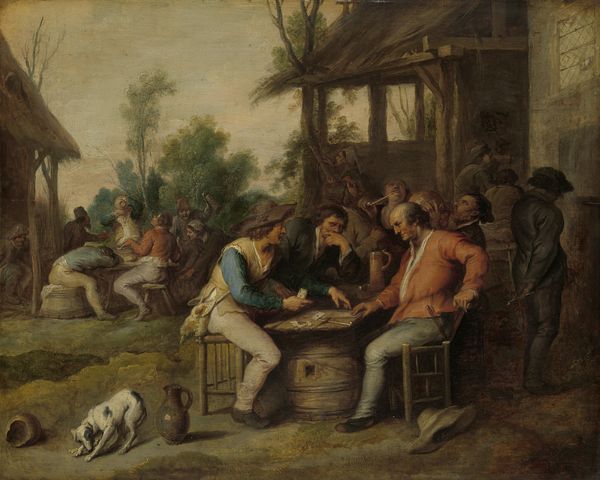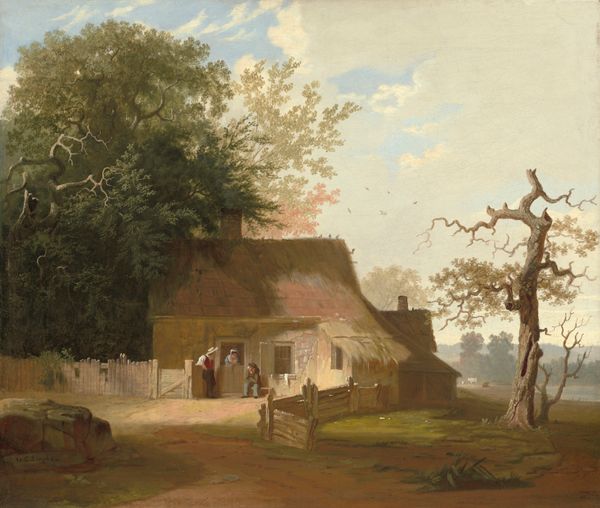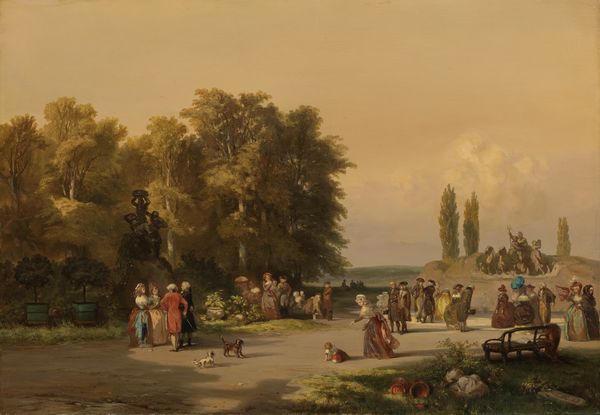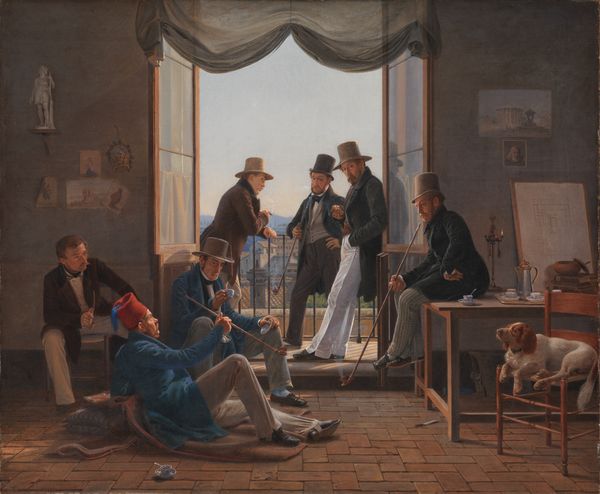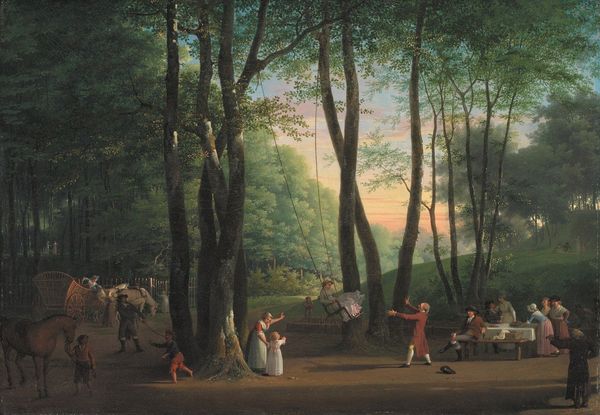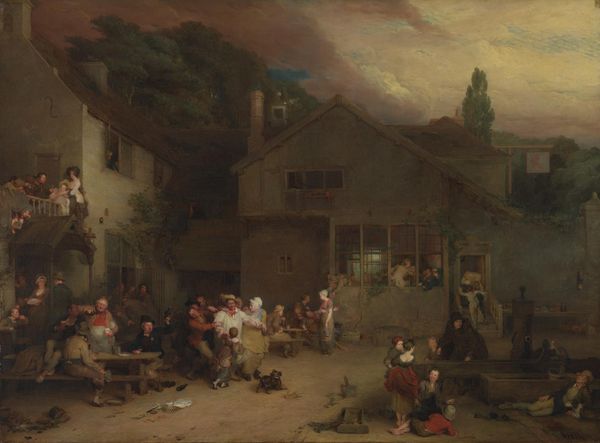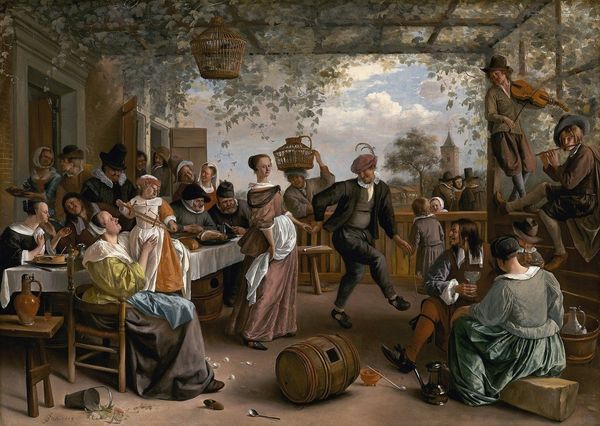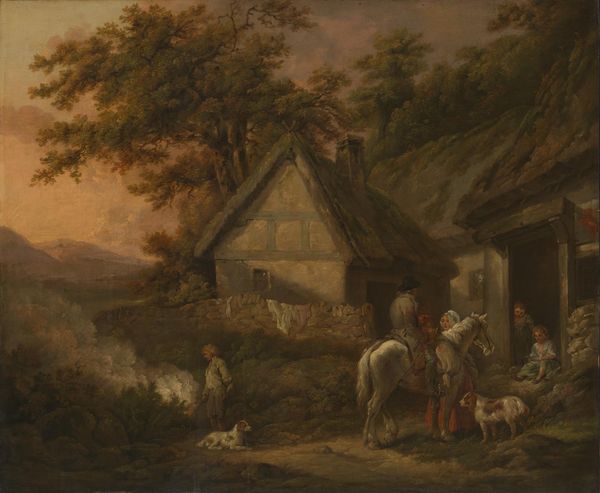
painting, oil-paint, watercolor
#
gouache
#
painting
#
oil-paint
#
landscape
#
oil painting
#
watercolor
#
group-portraits
#
genre-painting
#
mixed media
#
watercolor
#
realism
Dimensions: 63 cm (height) x 89 cm (width) (Netto), 77.4 cm (height) x 103.6 cm (width) x 6.2 cm (depth) (Brutto)
Curator: At first glance, it evokes a strong sense of community, a shared moment of leisure and joy in a tranquil setting. Editor: Indeed. Now, this engaging piece is "A Coffee Party at a Gamekeeper's House," an oil on canvas painted by David Monies around 1854-1855. You can currently find it on display here at the SMK. Curator: The scene feels incredibly grounded and natural, doesn’t it? There's something profoundly comforting in how the individuals interact; the dancers in the foreground, the chat around the table. It hints at familiar rituals. Editor: I'm struck by how Monies depicts the material elements – the rough-hewn wooden benches, the simple clay cups on the table. These things tell a story of rural life, the daily textures experienced by those living outside the city's center. You can see clear differences in how people present themselves through clothing, another clue about the social hierarchy represented. Curator: Exactly! And the little girl dancing in the center acts almost like an embodied spirit of place; she's unrestrained and joyful, a celebration of innocence, around which everything is organized. Note the musician, he also contributes to the spirit and provides more than the dance's rhythmic frame, almost creating the atmosphere for everything else in the artwork. Editor: Observe closely how Monies constructs space by positioning the table as the meeting point around which every participant socializes in their specific style and according to their specific place: this can also tell you how social dynamics can turn fluid with such casual occasions. Curator: Yes, those casual, intimate gestures are definitely highlighted as opposed to a more stiff or formal rendering of society. The trees in the background add layers of significance by creating a natural cathedral where community and the celebration of being meet. Editor: It’s important to acknowledge the labor required to bring such scenes to life and examine those rougher materials, like those benches again, in the composition. By considering the physical work required for simple living we appreciate those stolen moments of joyful meetings and parties more fully. Curator: You're right; viewing it this way expands the image beyond a simple genre painting and shows us how we celebrate existence at the simplest forms with materials on hand and shared symbolic spaces of cultural and historical depth. Editor: Looking closely at the materials represented alongside the labor inherent in constructing this type of leisure allows us to grasp that scene's meaning more accurately.
Comments
No comments
Be the first to comment and join the conversation on the ultimate creative platform.

